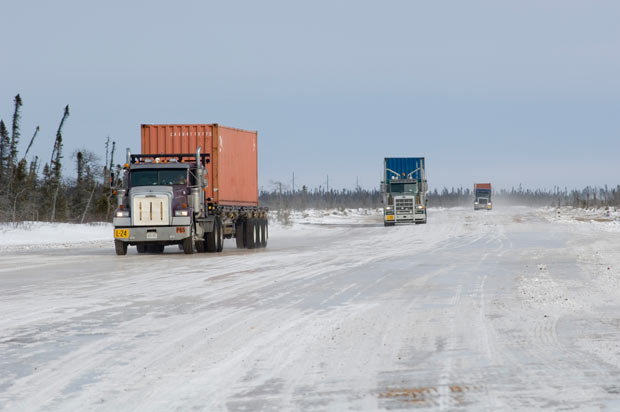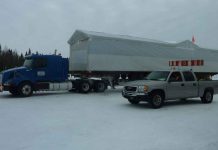
How Thick Must the Ice Be to be Safe?
THUNDER BAY – In Northern Ontario, the Ice Roads are a vital link between northern communities, and supplies from the south. Colder than usual seasonal weather is helping to freeze lakes and rivers faster than usual.
The opening of the northern winter roads, allows much of the heavy equipment, supplies, diesel fuel, and goods for Northern remote communities to be shipped in by truck rather than by air. It is a very positive economic benefit for many in remote communities.
The whole operation of winter road, along with the fun of ice fishing all depend on cold weather to ensure the ice is thick enough. In Minnesota, with recent reports of vehicles breaking through the ice from Douglas to Beltrami counties, the Minnesota Department of Natural Resources is cautioning everyone about driving on the ice.”Ice is never 100 percent safe,” said Capt. Greg Salo, DNR enforcement manager. “Winter recreationists need to think twice before driving out on the ice because the ice in many places is still not strong enough to support vehicles. No fish is worth your life,” added Salo.

Last winter (November to April), six people died in Minnesota from breaking through the ice. All the deaths involved either a snowmobile or vehicle.
In Ontario, with support from the Province and the federal government, 29 First Nation organizations and the Town of Moosonee will build and operate a network of temporary roads over frozen ground and waterways. Each year, these winter roads connect remote communities to a permanent provincial highway or railway system. Individuals and businesses use the roads from freeze-up until spring thaw, usually in mid March.
The DNR recommends anyone heading out on the ice should check with a local bait shop or resort – ask about ice conditions – and measure the ice.
The DNR clear ice thickness recommendations are:
4 inches for walking.
5 inches for a snowmobile or ATV.
8-12 inches for a car.
12-15 inches for a medium-sized truck.
When the temperature rises above freezing for six of the last 24 hours, double the recommended minimum thickness. And remember, if it stays above freezing for 24 hours or more, stay off the ice – it is not safe. – See more at: http://www.thefishingwire.com/story/307259#sthash.vMoPRGiZ.dpuf





